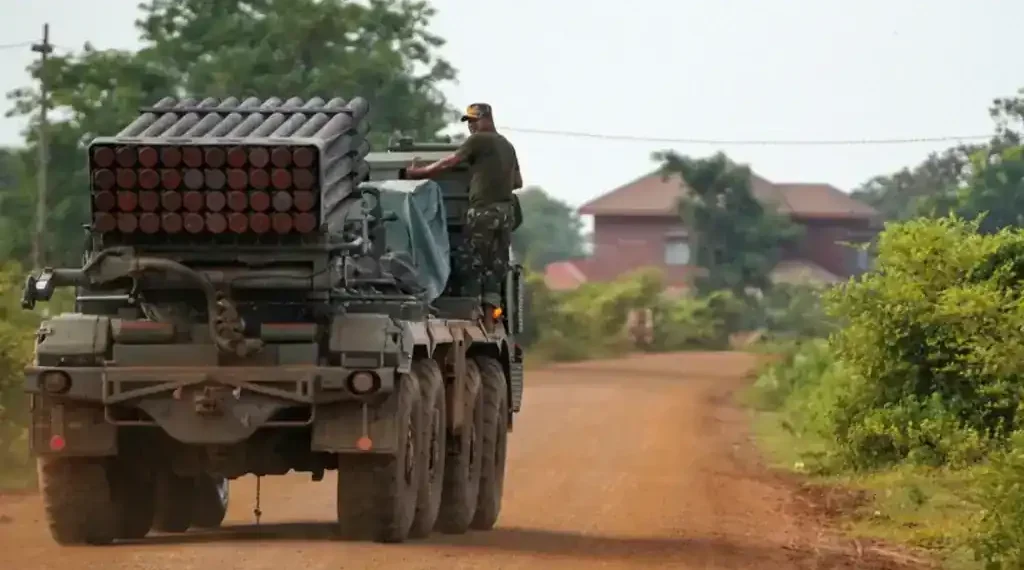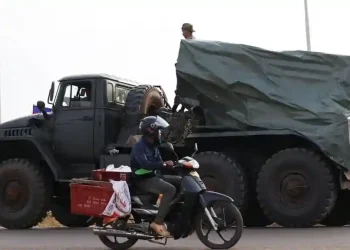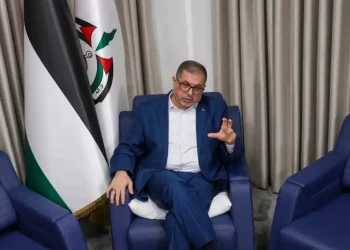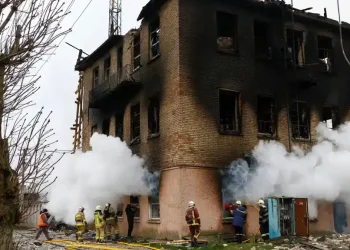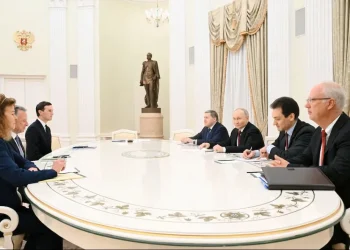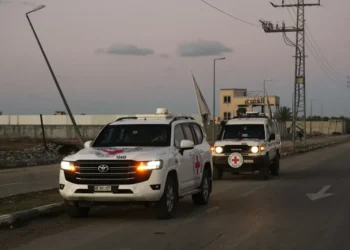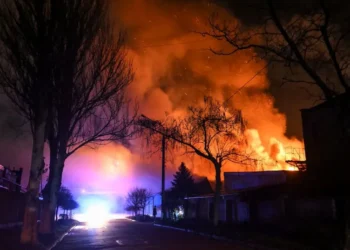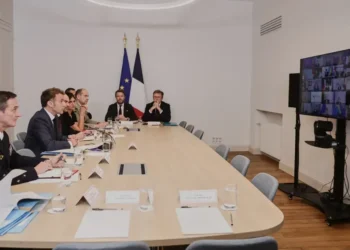Trump calls for immediate ceasefire between Cambodia and Thailand
July 25, 2025 – 9:16 AM
Former U.S. President Donald Trump has publicly urged Cambodia and Thailand to halt escalating border clashes and pursue immediate peace negotiations. His comments follow rising tensions and casualties near the disputed border, as both countries face mounting pressure to resolve the conflict.
At least 33 people have died since violence erupted on July 24, displacing thousands and sparking international concern. Trump’s intervention comes just days before U.S. trade tariffs are scheduled to take effect against both Southeast Asian nations.
Trump claims peace efforts underway
Trump, currently on a private visit to his golf resorts in Scotland, posted a message on Truth Social stating that he had spoken with the leaders of both Cambodia and Thailand. According to him, both parties “have agreed to immediately meet and quickly work out a ceasefire and, ultimately, PEACE!”
The former president said he had discussions with Cambodian Prime Minister Hun Manet and Thailand’s acting Prime Minister Phumtham Wechayachai. Phumtham later confirmed Thailand’s willingness to accept a ceasefire “in principle,” while expressing cautious optimism.
“We would like to see the sincerity of the Cambodian side in this matter,” Phumtham said, suggesting that Thailand remains wary of further escalation.
Background on the border clashes
The recent conflict stems from renewed military activity near a longstanding territorial dispute. Both Cambodia and Thailand have accused each other of initiating hostilities.
According to Thai officials, Cambodian forces used drones to surveil Thai troop positions, prompting a defensive response. Meanwhile, Cambodian authorities allege Thai troops advanced toward a historic Khmer-Hindu temple, violating a prior agreement intended to keep the peace.
This border region has been a flashpoint for over a century, with tensions dating back to colonial-era border demarcations established following France’s occupation of Cambodia.
Human toll and displacement
The violence has taken a steep toll on civilians and military personnel alike. As of July 25, at least 33 individuals—soldiers and civilians—have died, and thousands more have been forced to flee their homes. Emergency shelters have been established on both sides of the border, with humanitarian agencies warning of a worsening crisis if hostilities continue.
Local officials report damage to homes, schools, and infrastructure in several villages. Aid organizations are calling for safe corridors to allow displaced persons to access food, medical assistance, and shelter.
Trump links ceasefire to trade talks
Trump’s comments are also tied to a major trade issue set to impact both nations. A new U.S. tariff policy, scheduled to take effect on August 1, would impose a 36% tax on imports from Thailand and Cambodia. Trump said the tariff rollout would not proceed until the “fighting STOPS.”
“When all is done, and peace is at hand, I look forward to concluding our trading agreements with both!” he wrote.
Trump added that resuming trade talks was not appropriate “while there is fighting,” reinforcing his stance that a ceasefire is necessary for future economic cooperation.
Regional and international reactions
While Trump’s involvement has garnered attention, it remains unclear what role, if any, he is officially playing in the conflict resolution process. A day earlier, Thailand’s Foreign Minister Maris Sangiampongsa stated that outside mediation was not yet required.
“I don’t think we need any mediation from a third country yet,” Maris said during a press briefing in Bangkok.
Separately, Malaysian Prime Minister Anwar Ibrahim has offered to facilitate talks between the two countries, suggesting that ASEAN nations could play a more formal role in de-escalation efforts.
Earlier on Saturday, Cambodia had independently issued a call for an immediate ceasefire and peaceful negotiations—a move that aligns with Trump’s claims but may also reflect broader regional pressures.
A centuries-old dispute reignited
The Cambodia–Thailand border conflict centers around disputed lands, particularly areas surrounding ancient temples such as Preah Vihear. Although a 1962 ruling by the International Court of Justice awarded the temple to Cambodia, access routes and nearby territory remain contested.
Periodic clashes have occurred over the past two decades, but the current flare-up is the deadliest in years. Analysts say unresolved historical grievances, military posturing, and domestic political pressures contribute to the ongoing instability.
What’s next?
For now, the international community is closely watching whether both governments will follow through with formal ceasefire negotiations. While Trump’s claims suggest progress behind the scenes, there is no official confirmation of a formal mediation process.
The looming threat of U.S. tariffs adds urgency, as both Cambodia and Thailand rely on trade with the United States for key sectors such as textiles, agriculture, and electronics. A prolonged conflict could not only harm diplomatic relations but also impact economic growth in both nations.
Observers are also watching ASEAN’s next move, as the bloc may seek to prevent the dispute from spreading or undermining regional stability.
Conclusion
As tensions simmer along the Cambodia–Thailand border, calls for peace are growing louder—from local leaders, international observers, and now former U.S. President Donald Trump. Whether these appeals will translate into meaningful diplomatic progress remains to be seen, but with lives at stake and trade relations on the line, the path to peace may soon become a regional priority.
This article was rewritten by JournosNews.com based on verified reporting from trusted sources. The content has been independently reviewed, fact-checked, and edited for accuracy, neutrality, tone, and global readability in accordance with Google News and AdSense standards.
All opinions, quotes, or statements from contributors, experts, or sourced organizations do not necessarily reflect the views of JournosNews.com. JournosNews.com maintains full editorial independence from any external funders, sponsors, or organizations.
Stay informed with JournosNews.com — your trusted source for verified global reporting and in-depth analysis. Follow us on Google News, BlueSky, and X for real-time updates.
